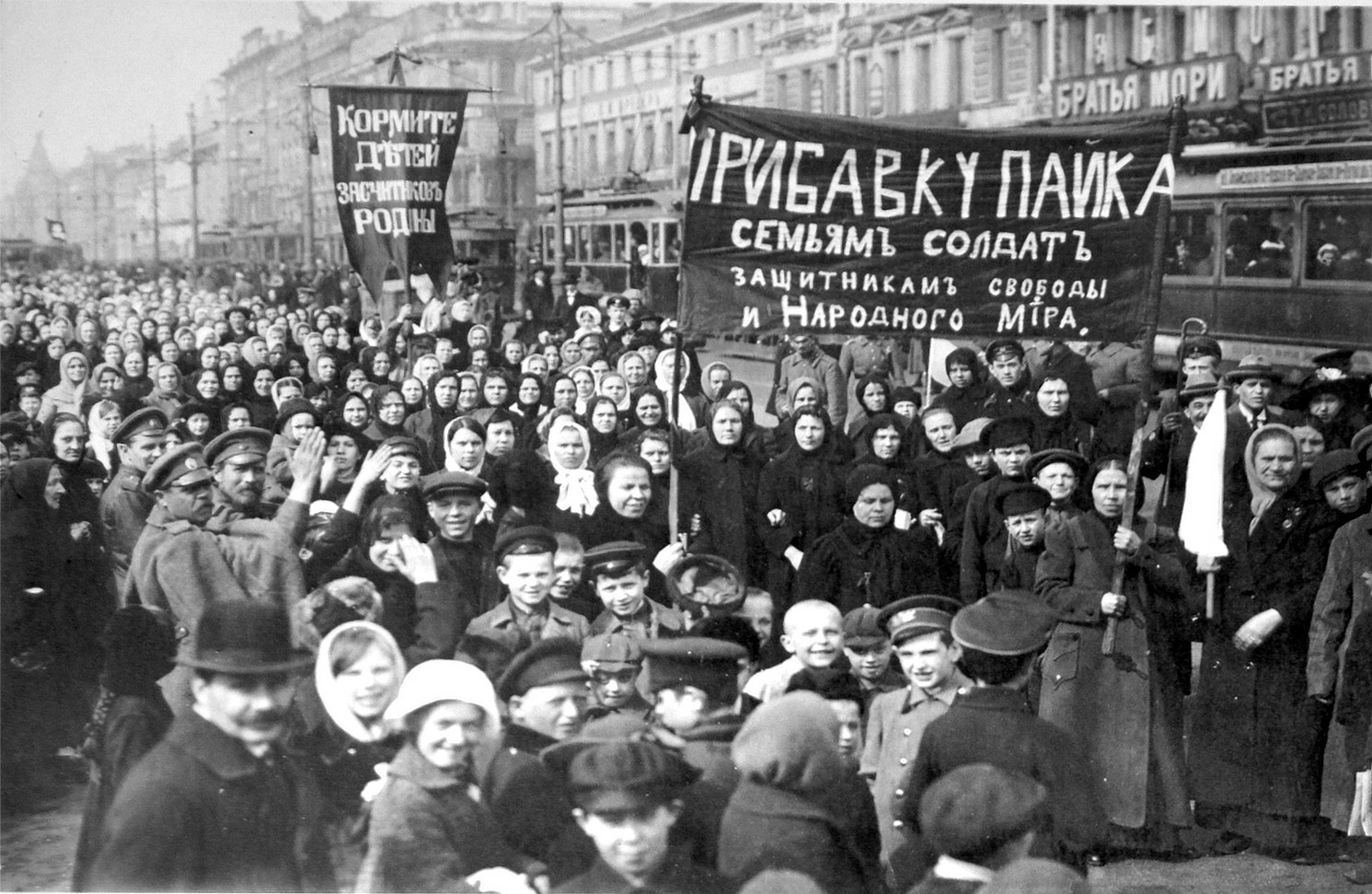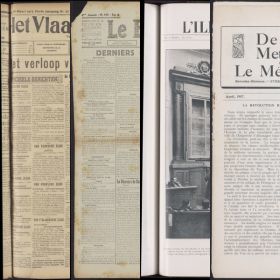On the eve of the First World War, Russia was in a state of turmoil. More and more Russians openly declared their dissatisfaction with Tsar Nicolas II and his authoritarian regime. With the outbreak of war, that dissatisfaction was temporarily washed away by a wave of patriotism. A strong anti-German sentiment fuelled a rapid and massive mobilisation. This enthusiasm was short-lived, however ̶ the Russian troops suffered huge losses and the war effort took a heavy toll on the country. The exhausting war rekindled the revolutionary fire in Russia.
Late February 1917[1], riots broke out in the capital city of Petrograd (St. Petersburg). An angry mob looted bakeries, and factory workers went on strike. The skirmishes soon grew into a revolt against the tsarist government, and when soldiers and eventually even army commanders joined the protest, the tsar’s days were numbered. Nicolas II abdicated on 2 March 1917 and an interim government took over the reins.
The Russian Revolution in Petrograd (L'illustration, 14/04/1917, p. 6)
The new government made short work of the decaying tsarist regime. It introduced freedom of press and freedom of expression, and, in autumn, promised free elections with universal suffrage for men and women. The unrest in Russia did not die down, however, as the new coalition failed to bring about the one thing the Russian people probably longed for most: an end to the war. The government decided to continue the struggle against Germany while the people yearned for peace. Vladimir Lenin realised that. Having spent the first war years in exile in Switzerland, he rushed back to Petrograd after the February Revolution, where he did everything in his power to incite people against the new government. His ultimate goal was nothing less than a socialist revolution. The way was paved for the October Revolution.
[1] All dates in this article are according to the Julian calendar, which was the standard in Russia at the time.


